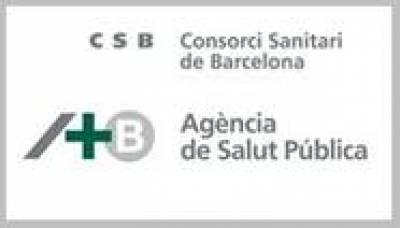Each of the following maps demonstrates the heterogeneous nature of the different neighbourhoods in Amsterdam in terms of socio-economic characteristics. These maps highlight explicit patterns of geographical segregation. Socio-economic indicators were derived using data from the 1996 - 2008 Enquete Beroepsbevolking (Labour Force Surveys) and the 2001 Gemeentelijke basisadministratie (Administrative Register Data). These data were provided by the Centraal Bureau voor de Statistiek (Statistics Netherlands).
The following socio-economic indicator maps are colour-coded; high concentrations of a socio-economic characteristic are represented by brown tones, which lighten as the concentration reduces. Intermediate concentrations of a socio-economic characteristic are represented by the white tone. The lowest concentrations are presented by green tones. Areas with a small number of inhabitants were excluded from the analysis and are shaded with stripes. For further information about how these maps were created, please visit the methodological section of the Atlas. Click on each image for a full-screen view of the maps below.
Unemployment
Area Distribution of Unemployment in Amsterdam
This map does not demonstrate a clear pattern of unemployment throughout Amsterdam. Most evident is a slight clustering of unemployment ranging out from the centre to the Western areas of Amsterdam. Yet, these clusters are interspersed with areas of low unemployment, and many areas with the lowest unemployment levels reside next to areas with the highest unemployment levels. Furthermore, unemployment levels ranging from very high to very low are seen throughout Amsterdam. The Central and Southern areas have the highest concentrations of intermediate levels of unemployment in Amsterdam.
Manual Workers
Area Distribution of Manual Workers in Amsterdam
The pattern for manual worker density differs significantly from that shown above for unemployment. Clear concentrations of high manual worker density are now apparent. The highest concentrations of manual workers are found in the Western districts of Amsterdam, in addition to several small areas located North of the centre. The lowest concentrations of manual workers are found in the centre of Amsterdam, and in moving South to the outskirts of the city. While intermediate levels of manual worker density are found throughout Amsterdam, this is mainly concentrated in the Eastern neighbourhoods, which divide the low concentrations in the Southern areas from the high concentrations of manual workers in the North-West districts. This map demonstrates a clear divide between the North-West and the South-East in the density of manual workers throughout Amsterdam.
Primary Education
Area Distribution of Adults with Low Educational Attainment in Amsterdam
The map of low educational attainment in Amsterdam shows similar patterns to the distribution of unemployment throughout the city. The highest concentrations of low educational attainment are found in centre and expand to the Western areas of Amsterdam. Areas farther away from the centre are those with lower levels of educational attainment. Notably, there are a small number of areas north of the centre with the highest proportion of low education attainment, which similar to the map of unemployment, are surrounded by areas with the lowest concentrations. Areas with a deficit of low education attainment are found in the centre of Amsterdam and in the North-west and Southern districts. These are interspersed with areas of intermediate to high levels of low educational attainment. This map, similar to that of unemployment, shows an unclear distribution of social deprivation per low educational attainment.
University Qualifications
Area Distribution of Adults with University Qualifications in Amsterdam
As we would expect, this map generally corresponds with the map of low educational attainment. However, areas most marked by low educational attainment also exhibit low levels of university qualifications, particularly in the Western areas of Amsterdam. The Central and Southern districts are largely brown, representative of a high proportion of university degrees in these neighbourhoods. However, a few small areas exhibit both a high proportion of low educational attainment and a high proportion of university qualifications, namely the large area in the North-West and the Western area on the South-Eastern 'island' of Amsterdam. This map shows a divide between central areas and outskirts of the city, as more deprivation measured by the dearth of university qualifications.
 Close
Close





